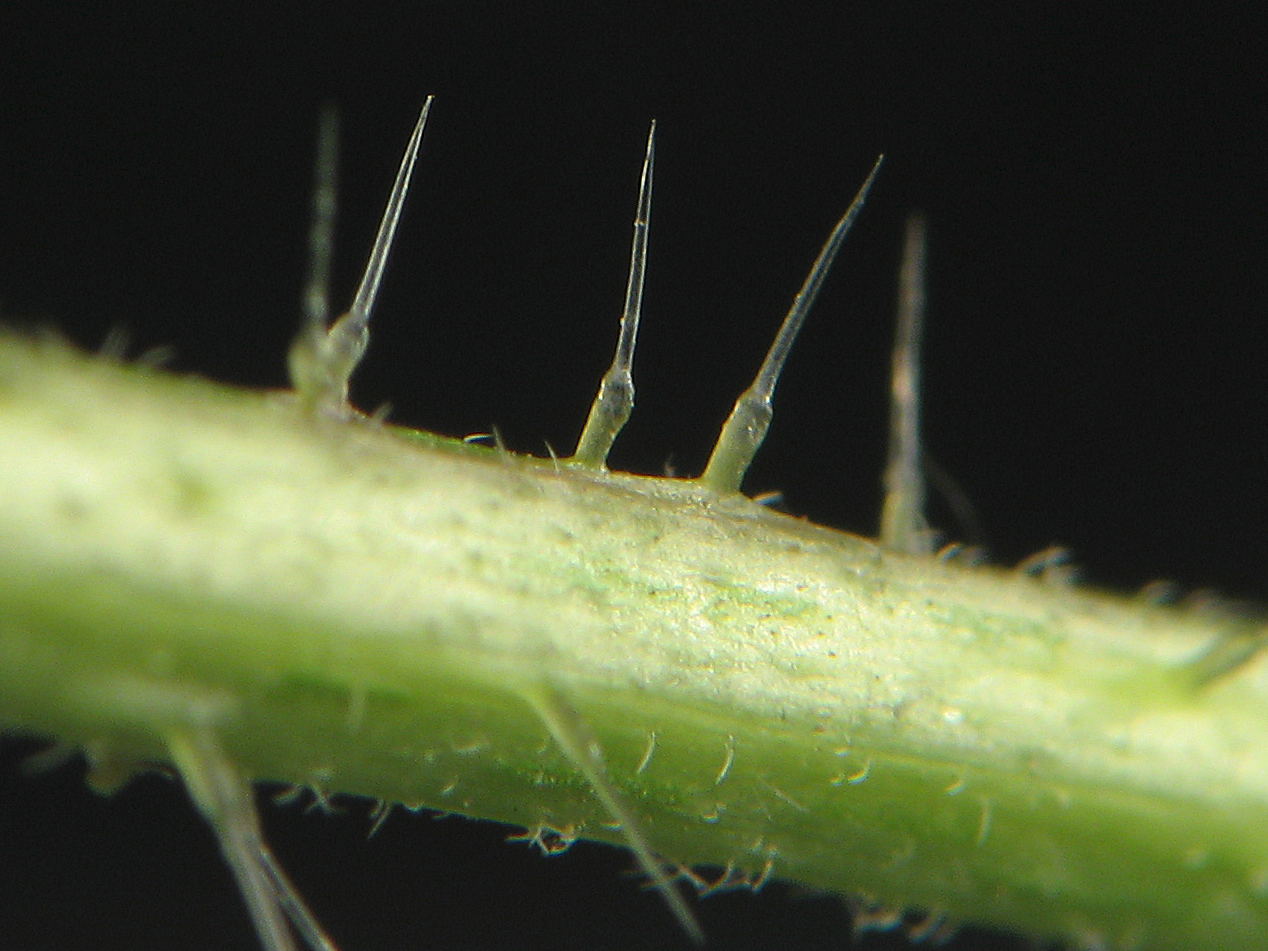|
Black-waved Flannel Moth
''Megalopyge crispata'', the black-waved flannel moth, crinkled flannel moth or white flannel moth, is a moth of the Megalopygidae family. It is found along the east coast of the United States, and as far inland as Oklahoma. The wingspan of this moth is 25–40 mm. Adults are on the wing from May to October. There is one generation per year in the north, two or more in the south. The caterpillars feed on various trees and shrubs. The caterpillars produce a venom delivered through hollow urticating hairs that can penetrate the skin. This venom can cause pain, a burning sensation, lymphadenopathy Lymphadenopathy or adenopathy is a disease of the lymph nodes, in which they are abnormal in size or consistency. Lymphadenopathy of an inflammatory type (the most common type) is lymphadenitis, producing swollen or enlarged lymph nodes. In c ..., headache and inflammatory dermatitis. References External linksBug Guide [...More Info...] [...Related Items...] OR: [Wikipedia] [Google] [Baidu] |
Alpheus Spring Packard
Alpheus Spring Packard Jr. LL.D. (February 19, 1839 – February 14, 1905) was an American entomologist and palaeontologist. He described over 500 new animal species – especially butterflies and moths – and was one of the founders of '' The American Naturalist''.Cockerell (1920) He served as a professor at Brown University. Early life Packard was one of four sons of Alpheus Spring Packard Sr. (1798–1884) and the brother of William Alfred Packard. He was born in Brunswick, Maine, and went to the Bowdoin College where his father was a professor of Greek and Latin. His mother, Frances Elizabeth, who died shortly after his birth was the daughter of Rev. Appleton who had served as president of Bowdoin College, and Alpha as he was known was raised by an aunt He was encouraged by Paul A. Chadbourne of Williams College to take up zoology. As a member of the Lyceum of Natural History he joined an expedition to Labrador and Greenland. In 1861 he received his bachelors degree. He we ... [...More Info...] [...Related Items...] OR: [Wikipedia] [Google] [Baidu] |
Moth
Moths are a group of insects that includes all members of the order Lepidoptera that are not Butterfly, butterflies. They were previously classified as suborder Heterocera, but the group is Paraphyly, paraphyletic with respect to butterflies (suborder Rhopalocera) and neither subordinate taxon is used in modern classifications. Moths make up the vast majority of the order. There are approximately 160,000 species of moth, many of which have yet to be described. Most species of moth are nocturnal, although there are also crepuscular and Diurnal animal, diurnal species. Differences between butterflies and moths While the Butterfly, butterflies form a monophyly, monophyletic group, the moths, comprising the rest of the Lepidoptera, do not. Many attempts have been made to group the superfamilies of the Lepidoptera into natural groups, most of which fail because one of the two groups is not monophyletic: Microlepidoptera and Macrolepidoptera, Heterocera and Rhopalocera, Jugatae a ... [...More Info...] [...Related Items...] OR: [Wikipedia] [Google] [Baidu] |
Megalopygidae
The flannel moths or crinkled flannel moths (scientific name Megalopygidae) are a family of insects. Distribution and habitat There is only one species of Megalopyge in the eastern United States, although there are several throughout the Neotropics. Only five species of the family are known to exist in Florida: three species of Lagoa and one species each of Megalopyge and Norape. While 236 species of Megalopyge are found from Mexico to Argentina, only 11 species have been identified in North America north of Mexico. Only the New World is home to the Megalopygae. Life cycle and behavior Adult flannel moths are stout-bodied, and very hairy. Females have thin antennae while males' are feather-like. Larvae are called puss caterpillars and, with their long hairs, resemble cotton balls. They are eaten by green lacewing insects and the ''Anolis'' lizards. They have venomous spines that can cause a painful sting and inflammation lasting for several days. In some cases, the sting may ca ... [...More Info...] [...Related Items...] OR: [Wikipedia] [Google] [Baidu] |
Oklahoma
Oklahoma ( ; Choctaw language, Choctaw: , ) is a landlocked U.S. state, state in the South Central United States, South Central region of the United States. It borders Texas to the south and west, Kansas to the north, Missouri to the northeast, Arkansas to the east, New Mexico to the west, and Colorado to the northwest. Partially in the western extreme of the Upland South, it is the List of U.S. states and territories by area, 20th-most extensive and the List of U.S. states and territories by population, 28th-most populous of the 50 United States. Its residents are known as Oklahomans and its capital and largest city is Oklahoma City. The state's name is derived from the Choctaw language, Choctaw words , 'people' and , which translates as 'red'. Oklahoma is also known informally by its List of U.S. state and territory nicknames, nickname, "The Sooner State", in reference to the Sooners, American pioneer, American settlers who staked their claims in formerly American Indian-o ... [...More Info...] [...Related Items...] OR: [Wikipedia] [Google] [Baidu] |
Wingspan
The wingspan (or just span) of a bird or an airplane is the distance from one wingtip to the opposite wingtip. For example, the Boeing 777–200 has a wingspan of , and a wandering albatross (''Diomedea exulans'') caught in 1965 had a wingspan of , the official record for a living bird. The term wingspan, more technically 'extent' , is also used for other winged animals such as pterosaurs, bats, insects, etc., and other aircraft such as ornithopters. In humans, the term wingspan also refers to the arm span, which is the distance between the length from the end of an individual's arm (measured at the fingertips) to the individual's fingertips on the other arm when raised parallel to the ground at shoulder height. Wingspan of aircraft The wingspan of an aircraft is always measured in a straight line, from wingtip to wingtip, regardless of wing shape or sweep. Implications for aircraft design and animal evolution The lift from wings is proportional to their area, so the h ... [...More Info...] [...Related Items...] OR: [Wikipedia] [Google] [Baidu] |
Caterpillar
Caterpillars ( ) are the larval stage of members of the order Lepidoptera (the insect order comprising butterflies and moths). As with most common names, the application of the word is arbitrary, since the larvae of sawflies (suborder Symphyta) are commonly called caterpillars as well. Both lepidopteran and symphytan larvae have eruciform body shapes. Caterpillars of most species eat plant material ( often leaves), but not all; some (about 1%) eat insects, and some are even cannibalistic. Some feed on other animal products. For example, clothes moths feed on wool, and horn moths feed on the hooves and horns of dead ungulates. Caterpillars are typically voracious feeders and many of them are among the most serious of agricultural pests. In fact, many moth species are best known in their caterpillar stages because of the damage they cause to fruits and other agricultural produce, whereas the moths are obscure and do no direct harm. Conversely, various species of ca ... [...More Info...] [...Related Items...] OR: [Wikipedia] [Google] [Baidu] |
Urticating Hair
Urticating hairs or urticating bristles are one of the primary defense mechanisms used by numerous plants, almost all New World tarantulas, and various lepidopteran caterpillars. ''Urtica'' is Latin for "nettle" (stinging nettles are in the genus ''Urtica''), and bristles that urticate are characteristic of this type of plant, and many other plants in several families. This term also refers to certain types of barbed bristles that cover the dorsal and posterior surface of a tarantula's or caterpillar's abdomen. Many tarantula species eject bristles from their abdomens, directing them toward potential attackers. These bristles can embed themselves in the other animal's skin or eyes, causing physical irritation, usually to great discomfort. The term "hairs" is technically a misnomer, as only mammals possess true hairs. The hairs on arthropods are called setae. In plants The most common form of urticating hairs in plants are typified by nettles, which possess sharp-pointed hollow ... [...More Info...] [...Related Items...] OR: [Wikipedia] [Google] [Baidu] |
Lymphadenopathy
Lymphadenopathy or adenopathy is a disease of the lymph nodes, in which they are abnormal in size or consistency. Lymphadenopathy of an inflammatory type (the most common type) is lymphadenitis, producing swollen or enlarged lymph nodes. In clinical practice, the distinction between lymphadenopathy and lymphadenitis is rarely made and the words are usually treated as synonymous. Inflammation of the lymphatic vessels is known as lymphangitis. Infectious lymphadenitis affecting lymph nodes in the neck is often called scrofula. Lymphadenopathy is a common and nonspecific sign. Common causes include infections (from minor causes such as the common cold and post-vaccination swelling to serious ones such as HIV/AIDS), autoimmune diseases, and cancer. Lymphadenopathy is frequently idiopathic and self-limiting. Causes Lymph node enlargement is recognized as a common sign of infectious, autoimmune, or malignant disease. Examples may include: * Reactive: acute infection (e.g., ... [...More Info...] [...Related Items...] OR: [Wikipedia] [Google] [Baidu] |




